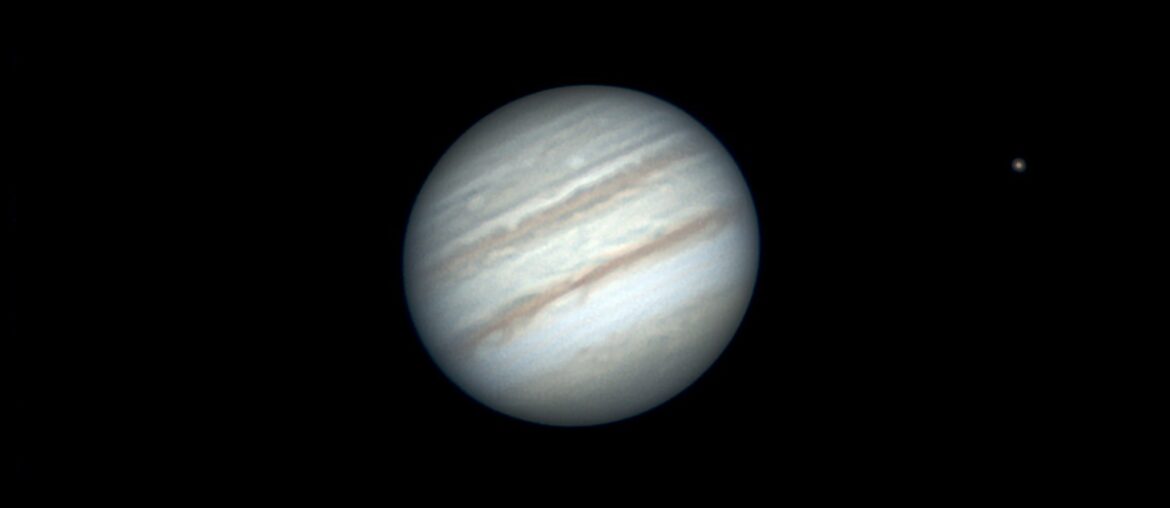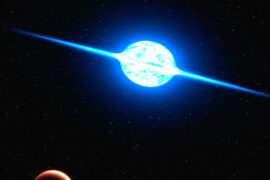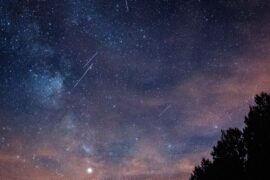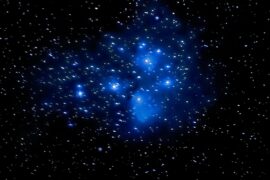The outer regions of planetary systems are home to giant, mostly gaseous worlds that shape their neighborhoods and tell us how planets form. From long-period giants to close-in gas dwarfs, surveying these objects helps compare composition, atmospheres and satellite systems across different environments.
There are 14 Jovian Planets, ranging from CoRoT-9b to WASP-39b. For each planet, the table lists Mass (10^24 kg),Radius (km),Moons & rings — you’ll find below.
How are the masses and radii in the list measured?
Masses and radii usually come from a mix of methods: transit light curves give radius (via transit depth) while radial-velocity measurements provide mass (or a lower limit); combining both for transiting planets yields precise density estimates. For non-transiting objects, estimates rely on modeling, astrometry or timing effects, so uncertainties can be larger — the table notes the typical precision where available.
Are moons or rings confirmed for these listed planets?
Within this set, confirmed moons are rare because current detection methods struggle with small signals; rings are easier to infer in some cases but still uncommon. The “Moons & rings” column flags known satellites, candidate detections, or null detections so you can see which planets have supporting evidence and which remain unconfirmed.
Jovian Planets
| Name | Mass (10^24 kg) | Radius (km) | Moons & rings |
|---|---|---|---|
| Jupiter | 1,898.13 | 69,911 | Io, Europa, Ganymede; faint rings |
| Saturn | 568.34 | 58,232 | Titan, Rhea, Enceladus; iconic bright rings |
| Uranus | 86.81 | 25,362 | Titania, Oberon, Miranda; narrow rings |
| Neptune | 102.41 | 24,622 | Triton, Nereid, Proteus; faint ring arcs |
| HD 209458 b | 1,310.21 | 96,485 | No known moons; rings not detected |
| HD 189733 b | 2,163.69 | 79,559 | No known moons; rings not detected |
| WASP-12b | 2,789.45 | 132,831 | No known moons; rings not detected |
| WASP-39b | 533.77 | 88,787 | No known moons; rings not detected |
| Kepler-16b | 632.08 | 52,653 | No known moons; rings not detected |
| CoRoT-9b | 1,594.03 | 73,407 | No known moons; rings not detected |
| HAT-P-1b | 994.07 | 92,213 | No known moons; rings not detected |
| TrES-4b | 1,744.38 | 125,765 | No known moons; rings not detected |
| Kepler-7b | 840.87 | 103,328 | No known moons; rings not detected |
| WASP-17b | 922.49 | 139,193 | No known moons; rings not detected |
Images and Descriptions
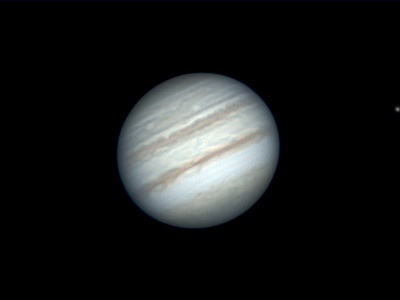
Jupiter
Gas giant orbiting the Sun, made mostly of hydrogen and helium. The largest Solar System planet, it drives strong storms (Great Red Spot) and hosts many moons, shaping dynamics of the outer system.
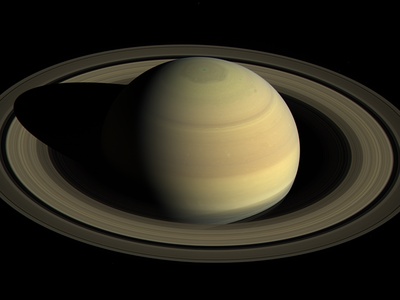
Saturn
Gas giant of hydrogen and helium orbiting the Sun, famed for its spectacular rings. Less dense than water, it hosts Titan with an atmosphere and Enceladus with a subsurface ocean and geysers.
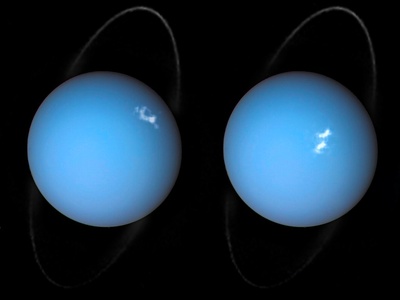
Uranus
Ice giant composed of water, ammonia, and methane ices with a hydrogen-helium envelope; orbits the Sun on its side. Notable for extreme axial tilt, narrow rings, and icy moons with varied geology.
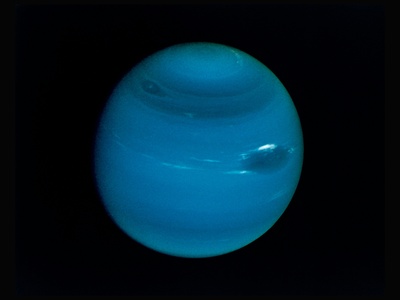
Neptune
Ice giant rich in volatiles (water, ammonia, methane) orbiting the Sun beyond Uranus. Known for supersonic winds, dynamic storms, and Triton—a likely captured moon with geyser activity.
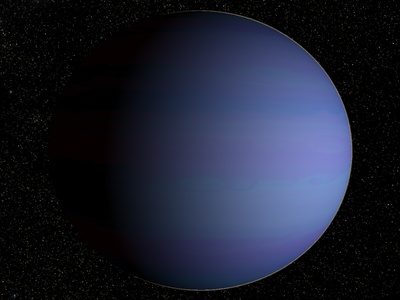
HD 209458 b
Hot Jupiter gas giant orbiting a Sun-like star (HD 209458) very close-in; hydrogen-helium atmosphere. Famous as the first transiting exoplanet with a detected atmosphere and observed atmospheric escape.
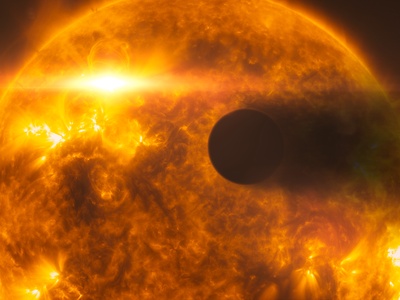
HD 189733 b
Hot Jupiter gas giant orbiting HD 189733; hydrogen-helium composition with high temperatures and strong winds. Notable for its striking deep-blue appearance and detailed atmospheric weather and wind studies.
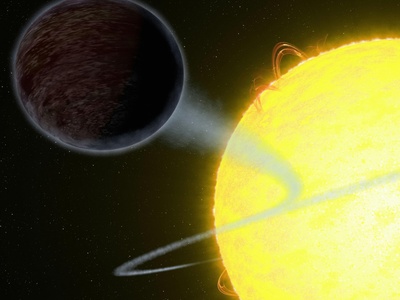
WASP-12b
Extremely hot, inflated gas giant orbiting very close to its star; hydrogen-helium composition. Notable for tidal distortion, mass loss toward its star, and one of the most intensely irradiated atmospheres.
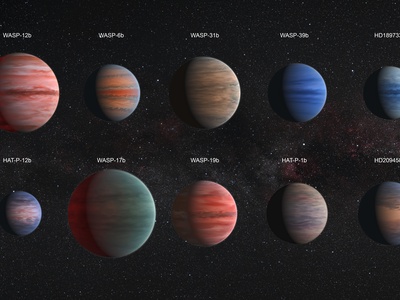
WASP-39b
Low-density gas giant (hot Saturn) orbiting a Sun-like star; hydrogen-helium atmosphere. Notable for a very clear atmosphere that has allowed precise detections of water and other molecules.
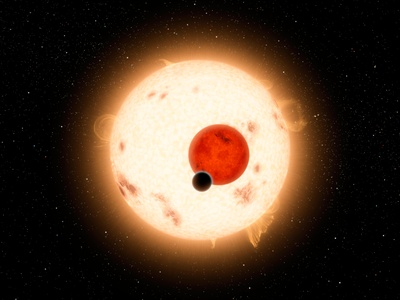
Kepler-16b
Saturn-like gas giant orbiting a binary star system (Kepler-16); hydrogen-helium composition. Notable as one of the first confirmed circumbinary planets, demonstrating planets can orbit two stars.
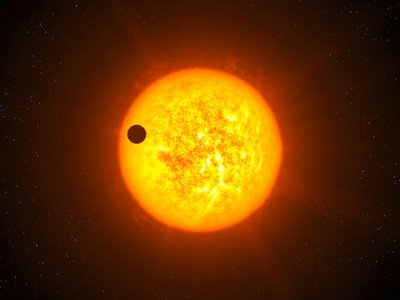
CoRoT-9b
Temperate gas giant orbiting a Sun-like star at wider separation; hydrogen-helium composition. Notable for a relatively long orbital period among transiting giants, offering cooler, Jupiter-like conditions.
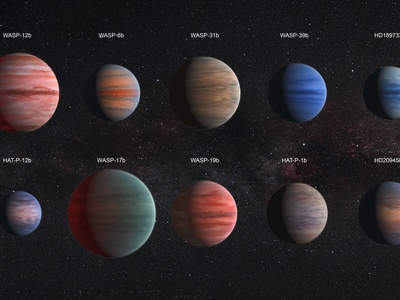
HAT-P-1b
Inflated hot Jupiter orbiting a Sun-like star; hydrogen-helium composition. Known for a large radius and low density, making it a key object for studying atmospheric inflation.
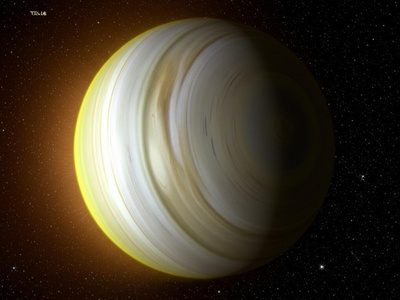
TrES-4b
Exceptionally low-density, highly inflated gas giant orbiting close to its star; hydrogen-helium composition. Notable for its enormous radius relative to mass, challenging internal structure models.
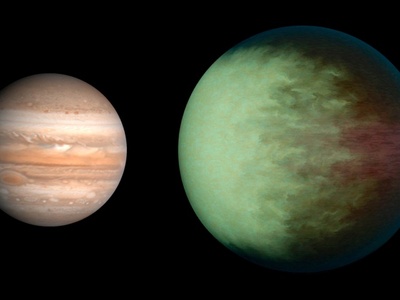
Kepler-7b
Low-density gas giant (hot Jupiter) orbiting a Sun-like star; hydrogen-helium atmosphere. Notable for mapped cloud patterns and very low mean density, indicating a puffy atmosphere.
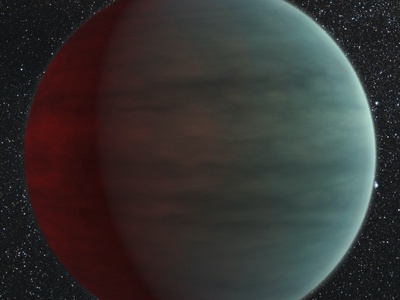
WASP-17b
Very low-density, highly inflated gas giant orbiting close to its star; hydrogen-helium composition. Notable for one of the largest measured radii and a retrograde orbit suggesting past dynamic upheaval.
Enjoyed this article?
Get daily 10-minute PDFs about astronomy to read before bed!
Sign up for our upcoming micro-learning service where you will learn something new about space and beyond every day while winding down.

